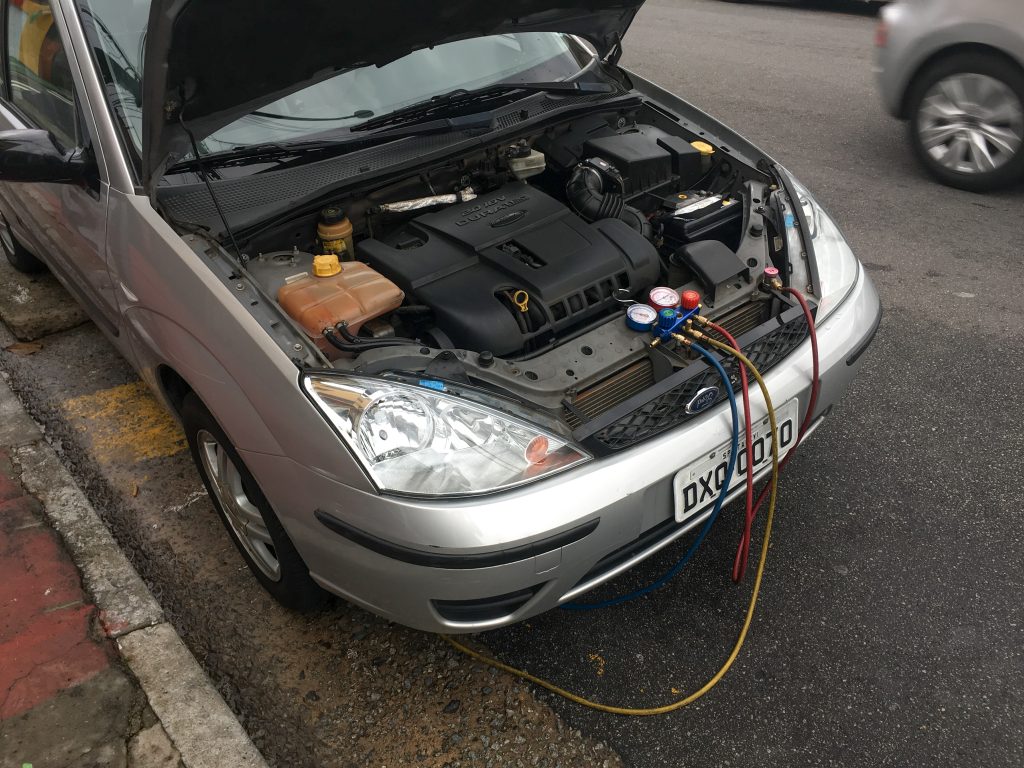Summary
Air conditioning, how does it work?
Principle and cost of air conditioning anti-leakage system
Strengths and weaknesses of the system
Air conditioning, which brings freshness and comfort, has become indispensable for the motorist. It delays fatigue and gives a feeling of well-being. It is, therefore, a system that must always be in perfect working order. But what is the value of the air-conditioning anti-leakage products available on the market? We have investigated for you!
Air conditioning, how does it work?
Everything is based on the change of state of a fluid, which travels in a circuit in several stages:
– The fluid, in its gaseous state, is raised in pressure and temperature by the compressor.
– It then passes through the condenser, from where it comes out in a liquid form.
– It passes through the desiccant bottle, which acts as a filter and a fluid reserve, and reaches the expansion valve at a pressure of 13 bars. This place is where the cold is created: a nozzle (the expansion valve) narrows the passage of the pressurized fluid, increasing its speed, such as the icing air escaping from a pneumatic valve from which the shell is removed. The liquid produces cold; it is the expansion valve.
The last phase sees the fluid pass through the evaporator positioned at the passenger compartment’s air intake, then cooled.
A list of tools

Verified by an accredited organization, it is composed of:
– a fluid charging and recovery station;
– a thermometer and a balance accurate to 5% (the quantity of fluid is determined by weight in g);
– an up-to-date monitoring table of vehicle fluid loads and tracing of fluid movements (amount withdrawn, injected, stored) and an annual declaration of interventions carried out and possible personnel movements.
Principle and cost of air conditioning anti-leakage system

Instructions for the use of the anti-leakage air conditioning
It is injected into the air-conditioning circuit through the “low pressure” valve and, depending on the version, either after a vacuum draw or directly into the circuit without any precondition.
This type of product would make it possible to plug any leaks in the air-conditioning circuits. Its composition, impossible to obtain from the manufacturer, is a thick solution of a hydrophobic product positioned at any leak source.
Good to know: some manufacturers provide indications on the conditions of their product, thus enlightening their degree of efficiency, such as using the product preferably for preventive maintenance (Berner) or not using it for leaks larger than 0.5 mm (Toralin).
Rates for air conditioning anti-leakage
The average recognized price of a 30 ml dose is $40, with a price range of $25 to $60.
Strengths and weaknesses of the system

- The advantages of automotive air conditioning anti-leakage systems are:
– the simplicity and the speed of intervention;
– the relatively low cost.
- The many disadvantages of anti-leakage air conditioning systems are often highlighted:
– the intervention must be carried out only by an establishment and approved personnel;
– no proof of effectiveness and undisclosed chemical composition;
– the effectiveness is not guaranteed – after injection, it can lead to a degassing of fluid in the atmosphere, which is entirely prohibited by the legislation;
– the quality-price ratio. It is the equivalent of a refill package, but the latter includes, besides, a tightness check, with a precise estimate for the repair (from $30 to $300 depending on the cost of spare parts) and the assurance of having solved the problem.
In short, is air conditioning leakage prevention the solution? Many arguments lean in its disadvantage, in particular that of its use in front of the legislation. A serious professional will generally not advise you of this kind of product or add it to the conforming services performed!

